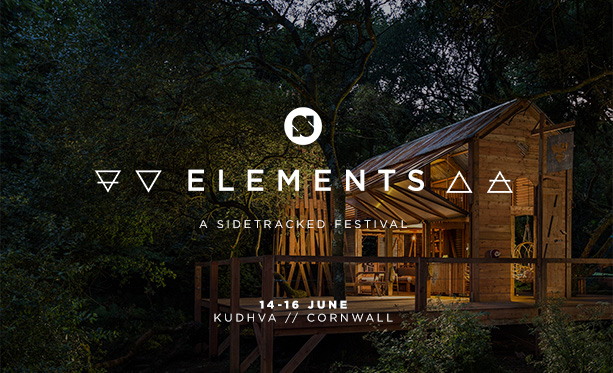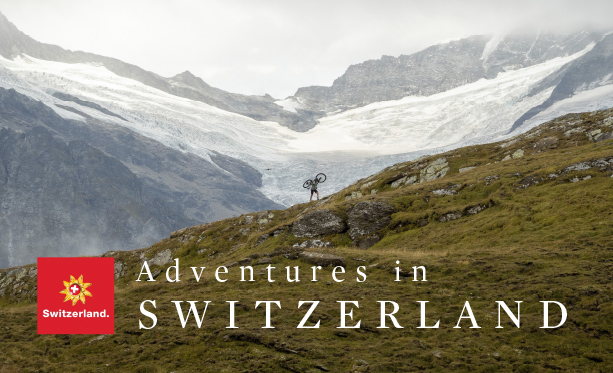Beyond Barriers
Inspiration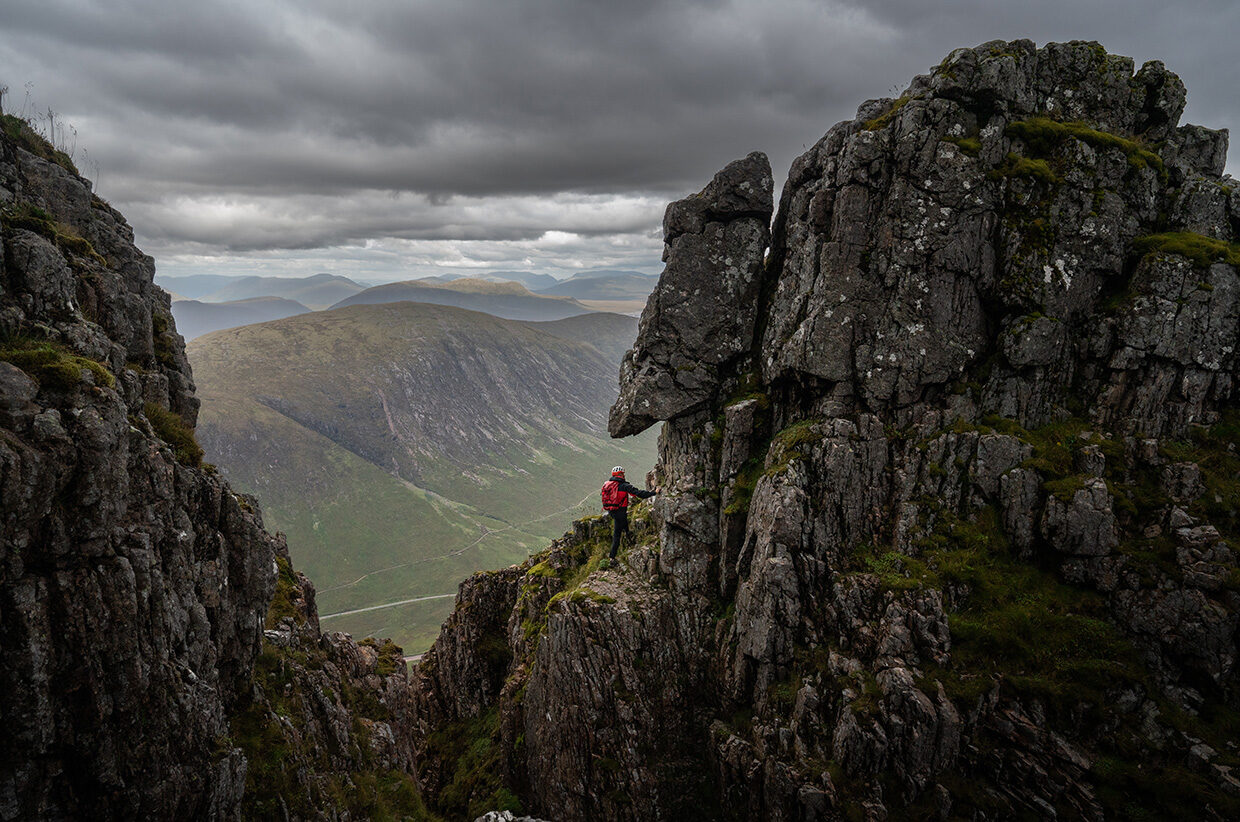
In Conversation with Adam Raja
Written by Alex Roddie // Photography by Matt Pycroft & Ed Smith
Adam Raja is a passionate Scottish climber and mountain photographer who has overcome formidable challenges to create a better life – a life of adventure, meaning, and helping others. In this interview, we sit down with Adam to chat about barriers to participation in the great outdoors, climate activism, and the wonder of the Scottish hills.
Alex Roddie: Tell us a bit about your journey, from events that led to a prison sentence to your discovery of the Scottish mountains.
Adam Raja: I spent my adolescence in Cumbernauld in the early 00s. In that period there were problems with alcoholism, drug misuse, gang culture, violent crime – all these things are still a problem in Scotland, but they were really prevalent at that time.
I grew up in a mixed-ethnicity family in a predominantly white area, and experienced a lot of racism. My father, who has Pakistani heritage, did too. Someone smashed the window in the takeaway restaurant where he worked, and when he confronted them he was racially assaulted by a large group and stabbed seven times. This type of experience possibly contributed to him becoming an absent alcoholic. My mum’s amazing – she’s worked exceptionally hard as a single parent. As I entered my teens that situation and those experiences left me vulnerable to negative influences.
Our social gatherings were drinking in underpasses – that was the norm. It wasn’t perceived as bad, it was perceived as cool, fitting in. But that also put me in the vicinity of adult criminals: drug dealers, my friends’ big brothers, gangs, and it exposed me to a lot of violent crime. I was getting into trouble but it was easy for me to hide it from my mum. So things escalated. It started by someone’s older brother giving me a bit of cannabis to sell for them. Not having to ask my mum for money when I knew she was struggling was a factor that motivated me, but you’ve never got much money when you’re a child – and it isn’t a glamorous lifestyle. You’re always in debt to these people. It ended up with me going to prison for possession with intent to supply.
I had a wee young nephew – at this point he was three or four, and his nature was a lot like mine. I was a shy, quiet kid before all the trouble, and he was growing up in the same area, his father wasn’t around either, so I wanted to be a good role model for him. When I came out of prison, I said to myself: ‘I need to change my situation. I can’t be this for him.’
I had nothing when I came out. My friends were still very much in that lifestyle, I couldn’t get a job, I was under curfew.
Fortunately I’d stayed on at school because I was terrified of my granny! So I had some grades, and a girl I was seeing at the time encouraged me to apply to university. I got an offer to study business and marketing. University changed everything – my first job was at the university, so I had income, job prospects. I was able to get a car and get out of the city. When I became aware of the Scottish mountains through social media I wanted to see them for myself, and from there to where I am today has been a gradual process – about ten years. It really started with hillwalking, the Munros, some misadventures!
Which mountains did you see first, and what were your first impressions? What emotions did they conjure in you?
I remember sitting in a lecture at uni, scrolling Instagram, and seeing the big pyramid peak of Buachaille Etive Mor, Glen Coe. I thought it was Iceland or something, but then I saw comments talking about it being in Scotland, and I didn’t believe it.
Glen Coe stuck in my head, so that was one of the first trips I took in my car. It was about March, the hills coming through Tyndrum up the A82 were snow-capped, and I was astonished. Coming into Glen Coe, passing the hotel on my right, the Buachaille looked like how a kid would draw a mountain – I swerved trying to keep my eyes on the road, and I just pulled over and sat and looked at it. I don’t think any words can describe it. I had butterflies in my stomach, and I still get them to this day. I get goosebumps just talking about it.
I googled how to climb the Buachaille, ordered some cheap walking boots, and then a few weeks later came back and had a bit of an epic – ended up on Curved Ridge! Mate, I was so lucky – I actually fell 10m or so, hobbled back to the car, and googled winter mountaineering. That’s how I learned about Mountaineering Scotland and their winter skills courses. I enrolled in one of them, learned how to use an ice axe and crampons.
What did your path from newly discovering the mountains to your current career look like?
My transition to working in the outdoors happened through Scouting. I’d never been in the Scouts, but I found a role as a marketing officer in their headquarters in Scotland. They were getting kids outside; I thought that I’d got so much from the outdoors, and it’d be great to help introduce other people to it. I was working with the Scouts for about two years when I became aware of Protect Our Winters through the likes of Jimmy Chin, Alex Honnold, and Conrad Anker. A role came up in the UK chapter of POW. It happened to be marketing, so I applied for it.
When I first started getting into the outdoors, I’d picked up a camera to capture these moments I’d been experiencing, and at some point I remember thinking it’d be cool if I could make a living from this. I was out on the hill alone, so most of my photography was self-portraits of me standing somewhere, or landscapes – nothing wrong with that, but not a lot of organisations are interested in buying it. As I started getting out with other people I started to take more action or adventure photography. That gave me opportunities to work with brands. It’s nice that I’ve got the four-day-a-week job with POW because I can fit in photography gigs – and it doesn’t feel like work, because I’m shooting things I want to shoot.
So it’s been gradual, and it’s also been difficult, especially coming from the background I’ve come from. I lived with that for ten years, and I had to disclose it on every job I applied for in that time.
As a society, how do you think we can encourage positive outdoor communities so that young people can avoid the pitfalls you encountered?
We need to tackle the underlying social issues first of all. Drug misuse, alcoholism: these things are huge issues in Scotland, and they come from poverty and inequality, which have to be addressed at a government level. We need to provide opportunities for people who are in these situations. Scouting is one answer, although because of its history it has quite a negative perception in some circles – it previously had ties with religion, girls couldn’t join, and it’s predominantly white. Still, initiatives like that are amazing, and they’re doing great things for kids.
We’ve seen investment in outdoor education dropping over the past 10 years or so. Many outdoor centres in Scotland have closed, so fewer kids are getting that early access. The outdoors isn’t going to be for everyone, but the opportunity to have these experiences is important. You never know what seed it’s going to plant.
Aside from establishing a connection with nature, these groups give kids who don’t have positive role models at home the opportunity to be in the presence of positive role models. It’s a multi-faceted, complex issue. Things like Scouts, and a lot of the diversity and inclusion groups we’re seeing, have a huge potential for impact.

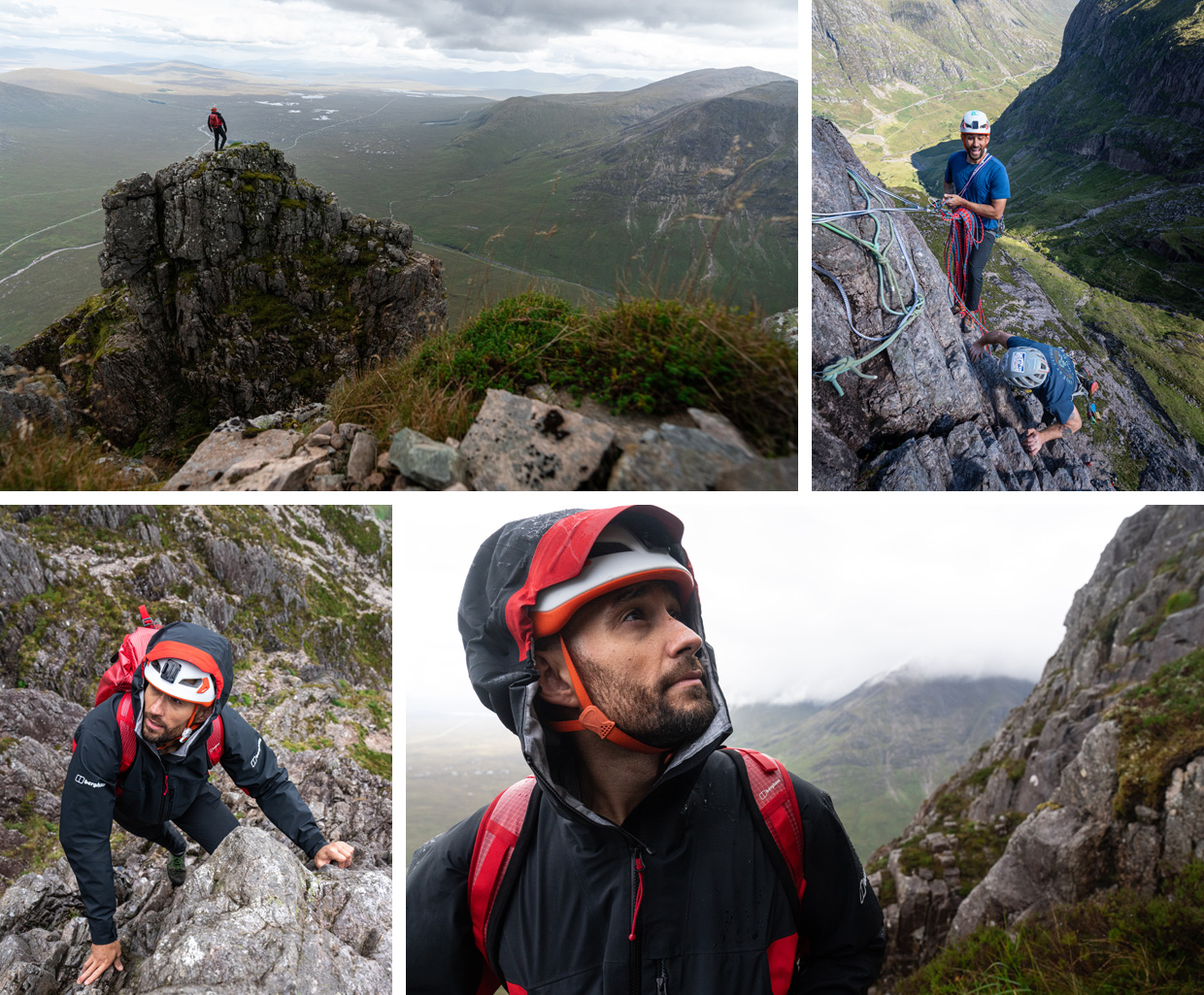
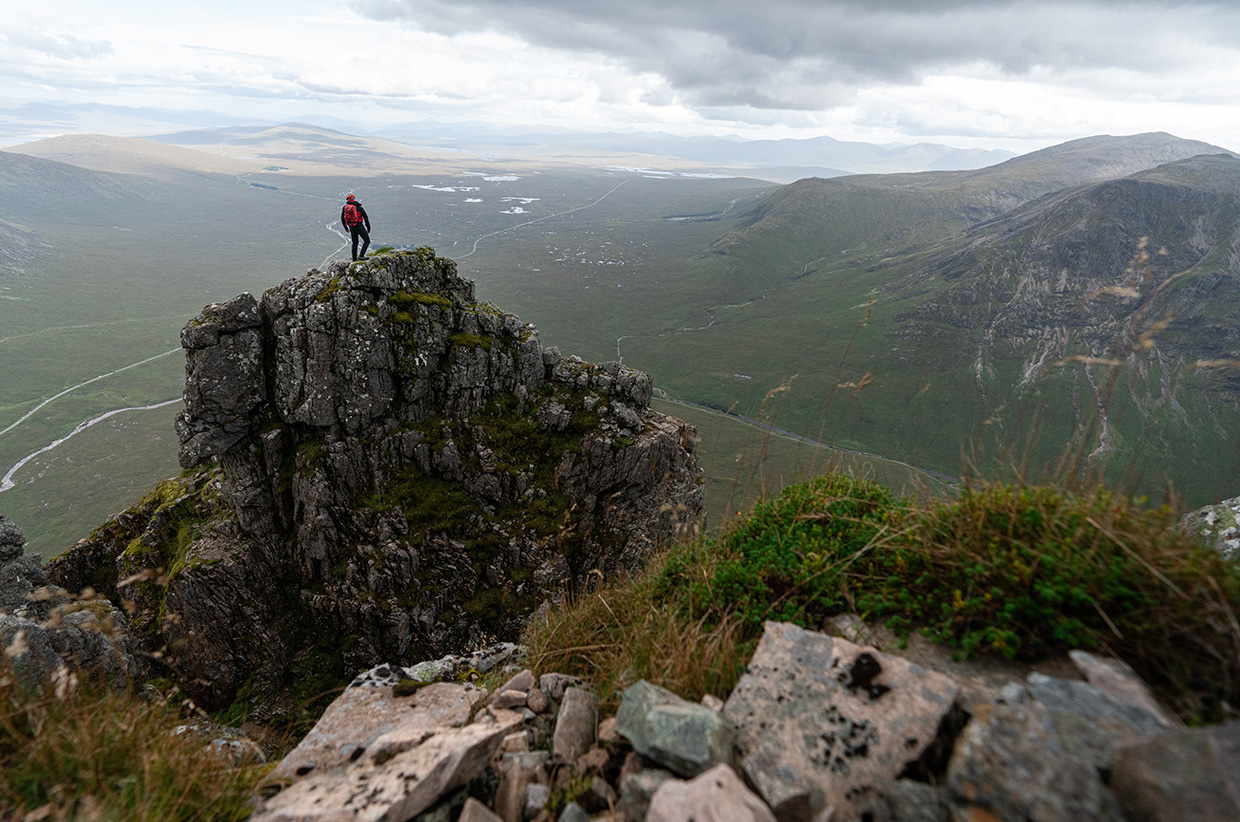
What do you see as the barriers to access faced by many when it comes to getting outdoors? How can we break these barriers down?
Spending time outdoors for leisure is a huge privilege, and it comes with different barriers for different groups. Poverty is a big one – people coming from a poorer background just don’t have those opportunities. Culture, as well. Glasgow, for example, was once a very industrial city, and getting outside isn’t something our parents and friends were doing. And then you look at marginalised communities, lack of representation, city-dwelling, racism, and there’s a lack of confidence to get outside based upon all that.
Something else I’d add – and I don’t want to sound negative about this – but in climbing there can be a lot of elitism in my experience. It’s just little things, but for someone who already feels uncomfortable going to a climbing gym, a daft comment can make you feel unwelcome. I remember silly comments when I started climbing in the gym. People were commenting on how new and unused my gear was, for example. As a community we can all do our bit to make these places more welcoming.
Tell us about your work with Protect Our Winters.
POW is a climate-action charity and our mission is to help turn passionate outdoor people into effective climate advocates. What that means is influencing policy to bring about systemic change, which is what people smarter than me tell us that we need to do to get out of the climate crisis. We’re so used to hearing the narrative that it’s on the individual, your carbon footprint, because you’re eating meat and you’re driving a car, but ultimately you’re using systems you’ve had little influence over. Rather than guilt-tripping individuals, it’s about educating people so that they can speak out and influence policy.
Something like 50 per cent of young people don’t vote – and ultimately it’s their future, their world. POW are encouraging people to vote with climate in mind. If people are demanding strong climate action from their leaders then at some point the tables will turn. The outdoor community in the UK alone is estimated to be about 20–25 million people – from dog walkers to hillwalkers and climbers – and if all these people are turning up to vote and demanding climate action then it could be hugely influential.
What would you say to young people struggling with drugs, violence, and discrimination in cities today?
I’ve seen how that lifestyle plays out. The cliche is that you either end up dead or in prison, but there’s a third path, which I’ve seen more often: you end up living a life of despair and depravity, with fewer options as time goes on. I know guys who have passed away, people who are still in and out of prison, but I know many more who are sitting at home with no options, drinking every day. There’s nothing glamorous about it. That is the way it’s going to go if you don’t remove yourself from that lifestyle.
So what I’d say is to try to build up the courage to speak to someone about the issues you’re experiencing. For me it escalated so badly because I hid it. Speaking to someone isn’t an easy thing to do, but if an adult had intervened things might have happened differently. Speak to someone you can trust, whether that’s a parent or teacher. Ultimately, if you want a better life, it won’t be easy but you can improve your situation. If I can do it, anyone can! You just have to keep putting one foot in front of the other in a positive direction and it’ll pay off. Small changes compound over time. Nothing’s out of anyone’s reach if you commit to it.
What’s your favourite mountain or climb in Scotland? What does it mean to you?
Oh man, I think you know the answer! I have to say it’s the Buachaille. I just love that mountain. I’ve been walking and climbing on it for five years now and haven’t even done half of the routes there. It’s a playground within a playground, but for me it’s always going to represent the gateway to the life I live today. I’m so much happier and I’ve got such a fulfilling life, and it was the Buachaille that first captured my imagination, brought about the obsessive pursuit that took me away from my old life.
I’ve got a really emotional and romantic connection to the Buachaille. And Curved Ridge – what a way to go up that mountain! This all sounds very airy-fairy, but having a romantic connection with a mountain, and exploring it in such an intimate way… I’ve been up the gullies, been up the ridges, really getting to know it. Glen Coe – what a special place!
Adam Raja’s episode of The Ascension Series tells the story of a young Scottish man with Pakistani heritage who spent his youth embroiled in gang culture, knife crime, drug and alcohol abuse. Until he set foot in the mountains, and there he found the confidence and community that has redefined his life. It is a story that explores cultural heritage, identity, and connection to a landscape. At its simplest, it’s the tale of one man’s journey to becoming comfortable with the person he truly is. This is the first episode of Berghaus’ new Ascension Series, episodes 2 and 3 will be released later this winter.
Produced in partnership with Berghaus // berghaus.com // @berghausofficial
Featuring Adam Raja // @itsadamraja
Written by Alex Roddie // @alex_roddie
Photography by Matt Pycroft // @mattpycroft



